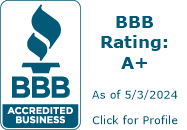10 Ideas for Setting Up Your Kindergarten Classroom
It's almost that time of year again: time for shuffling furniture, labeling classroom supplies, and perfecting lesson plans in short, back to school. Every teacher knows the buzz, that feeling of a new school year, new students, and endless possibilities. Kindergarten teachers, however, know just how crucial those first few days are. Yours is possibly the first classroom your students will ever encounter, and it will set the standard for all future classrooms and learning experiences. No pressure, but kindergarten teachers have big shoes to fill! Below are ten fun, fabulous ideas for setting up your kindergarten classroom so that communication, education, and fun are the norm from day one!
 1. Set the tone of organization from day one
1. Set the tone of organization from day one
 1. Set the tone of organization from day one
1. Set the tone of organization from day one
Kindergarten students are new to the school day. Some may have been to preschool, some may have been in daycare, and others may have never been in a school-like setting with other children before. Therefore, it is important to teach students YOUR expectations for organization and respect from the first day. Having a space to keep students' belongings safe and organized will teach them responsibility, and will free up more classroom space for moving, growing, and learning. Coat racks, cubbies, or lockers are all excellent organization storage options. It is helpful to explicitly teach your students how to use this space, as some of them may be new to sharing a room with others. Some helpful lessons may be to teach them how to appropriately put things away, when students are allowed to access their things, and how to respect their classmates' belongings.
2. Group work with tables and chairs
We all know that today's kindergarten is not what it was thirty, twenty, or even ten years ago. Kindergarteners are held to rigorous standards for learning from the moment they arrive in your classroom. However, while these standards might be high, the seating arrangements should still reflect the children's levels of development. Seating your students in groups is the most effective way to allow for sharing, communication, and peer-learning. Whether at circular, square, or rectangular tables, your students should always be seated with at least two other students for maximized learning. Also, remember that tables and chairs should be the appropriate height for your students. Nothing distracts a five year old more than being uncomfortable!
3. Rug time is the best time!
Much of your kindergarten teaching will occur on the classroom rug. Therefore, you want your rug to be a welcoming space. Large, colorful rugs are a good idea because they give students room to sit comfortably and have personal space. Assigning spots on the rug usually helps save time, and students like knowing exactly where to sit. Rugs that already have clear boundaries, such as shapes or numbers, work well and will save you time trying to remember where each student's spot is.
 4. Reading Nook
4. Reading Nook
 4. Reading Nook
4. Reading Nook
Kindergarten is truly a magical year, during which your students will learn to truly treasure reading. Giving them a special space to read during free time or reading time will make this love even stronger. In this special reading nook, it is important for books to be easily accessible to students. Covers should be facing out so that kids can see what titles are available to choose from, and bins of books should be labeled by author, subject, or series for clear organization. Comfortable seating should be available so that students can easily hunker down. It's amazing how quiet and productive students can be in the right setting!
5. Visuals, visuals, visuals!
Kindergarten students love to learn through song, rhyme, and play. They love to watch you teach, and then imitate you when playing school with peers. Many of these children remember by watching, which is why visual aids are key to their success. A simple sketch to explain a lesson can be the difference between complete confusion and total comprehension. Make sure that yourwhiteboard or chalkboard is in an easy-to-see, central location. That way, all students will be able to see it, whether from their tables or from the rug. It is also beneficial to have a small easel or chalkboard available for students to practice lessons on during activities or even as your helper during a whole-group or small-group lesson.
6. Space for Centers and Workstations
Throughout a kindergarten school day, your students should be constantly engaged in learning, both with you and with their peers. Centers and workstations are places where students practice working independently to strengthen the skills and strategies that they have already learned from you. However, as every kindergarten teacher knows, this can be the noisiest and most distracting time of day if not properly overseen and organized from the start. Designating clear spaces around the room for different centers will allow students to know exactly where to go, and where to stay, until their time at that center is over. These spaces can be as simple as a table, or as intricate as a play kitchen or art corner.
7. Organization for Centers and Workstations
Once you have a clear plan for where each of the centers will be in your classroom, it is important to organize the materials for a smooth experience. Color coding bins, labeling supplies, and putting all materials in close proximity to their matching centers will help your students to work independently. It may take some brainstorming, but once your centers are organized and expectations are clear to your students, your station time will be smooth sailing!
8. Save some space for small group lessons
Once your centers and workstations are underway, you will have time to pull a few students for strategy groups or guided reading lessons. This time is precious, as you get to zoom in on just a few students and target their strengths and needs. Having a kidney table in your classroom for these small groups is an efficient way to meet with students while the others work independently around the room. Try to set your table in a corner, away from the other kids and any distractions. In addition, keeping a small set of mobile drawers nearby can help you stay organized and maximize your teaching time!
9. Get funky with seating
While there are, of course, standard chairs that most kindergarten students would find comfortable, it can be beneficial to sometimes switch the seating up. Having a special seat for the student of the week, for example, can keep kids excited and motivated all year long. Another fun way to encourage hard work is to use an author chair when you want students to share their writing. Better chairs can also help that active student stay seated during your lessons. Get creative! A little change in seating can go a long way with five and six year olds.
10. Don't forget about YOURSELF!
As the teacher of young students, your days often go by without sparing a single thought for your own needs. You encourage letter sounds, sing rhymes, and tie shoes while your cell phone sits in your handbag and more and more work piles up on the desk. Don't forget about yourself! Staying organized all day can help you save a lot of time once the students leave. Having a system that works for YOU is important to ensure that not only your students have a good day, but that you have a successful and happy one as well. Remember, without you, nothing in your fabulous classroom would ever get done!
At School Outlet, we have the supplies that you need to organize your classroom to perfection. Check out our inventory today!



